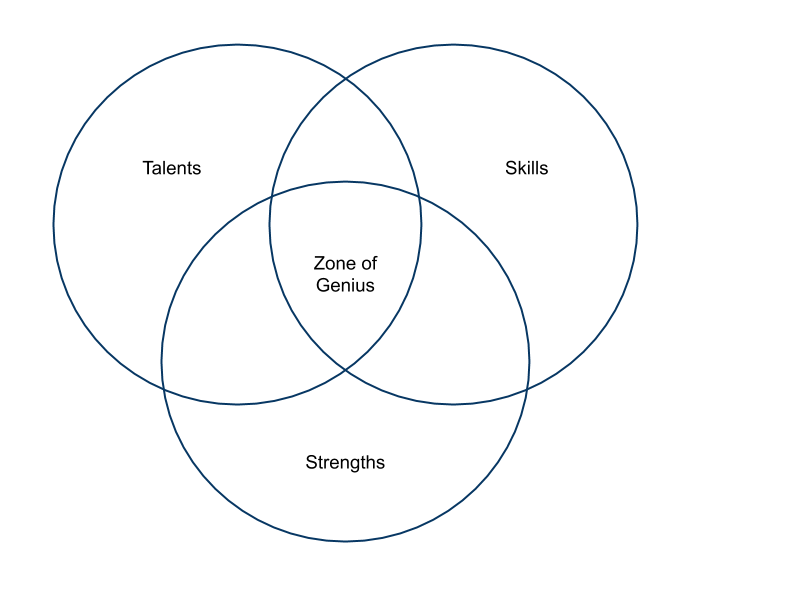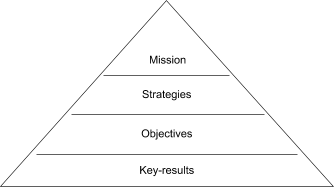The Manager's Handbook
Started on 2022-01-05; updated on 2022-06-06

📍: https://themanagershandbook.com/
Started on 2022-01-05
last updated on: 2022-01-05
Introduction
It's not a promotion, it's a career change
- once you've been doing it for a while, you'll realize that the best managers let their team make the decisions. Sure, they act as a tiebreaker every now and again, but their team should be driving things.
-
Associating management with higher compensation is a classic trap companies fall into. It changes all the incentives for individual contributors (ICs) who want to further their careers.
-
At its heart, management is an act of service.
- So why become a manager?
- Finding joy in the leverage of a high-performing team
-
Finding joy in your team's personal growth.
-
The paradox of management is that the attitude that got you to that position isn’t the attitude that will make you successful at it.
-
management is tactical and leadership is strategic.
- Management requires dealing with the day-to-day realities of hiring and aligning people, such as one-on-ones, performance reviews, planning meetings, goal check-ins, etc. Leadership means looking forward, compounding value, connecting dots, taking cues from outside the organization, and talking to customers to come up with a vision that you can communicate to the rest of the company.
last updated on: 2022-01-09
1 Managing yourself
Managing your time and calendar
- The first rule in time management is to ruthlessly protect your time.
- Whenever someone asks for your time, instead of accepting a meeting, ask whether their issue could be resolved with a Slack message, Google Doc, or email instead.
- If a meeting is inevitable, keep it as short as possible. Ensure that everyone is prepared for the meeting in order to make the most out of the time, and stack your meetings on specific days to ensure long periods of uninterrupted time outside those days where you can get focused work done.
This chapter was inspired by (and some parts lifted with permission from) some of the lessons in a talk by Keith Rabois.
- The second rule is to proactively design your calendar.
To learn how to identify your priorities and then categorize your recent activities accordingly, see Getting things done.
-
Each Sunday afternoon, write down your top 3 priorities for the week and design your calendar to spend 80%+ of your time on those priorities.
-
In order to maximize your team’s output, you need to spend time on the activities that will influence that output the most.
- Use a color coding system when creating calendar events to group activities.
- An energy audit is simply looking through your calendar and reflecting on which meetings give you energy, and which take energy from you. Then try to eliminate the latter category by hiring, delegating, and redistributing work.
Getting things done
- All GTD systems all share two key insights.
- Your mind is made for having ideas, not for holding ideas.
-
Creative work takes long periods of uninterrupted time. It is disrupted by context switching.
-
How GTD works
- Capture: capture 100% of everything that has your attention. Little, big, personal, and professional.
- Clarify: For everything you capture, decide if it is actionable.
- Organize: Organize those actionable tasks by category and priority.
- Reflect: Look over your lists frequently to determine what to do next. Do a weekly review to bring yourself current, update your lists, and clear your mind.
-
Engage: Get to work. Choose your next action and get to it.
-
The good news is that you can apply GTD to email fairly simply. The key is to asynchronously batch process your email. Turn off all push notifications and only look at your email twice a day.
Top goal
- Greg McKeown, who wrote a phenomenal book on productivity called Essentialism, boils this down to one key concept: Schedule an hour each day (that is, put an Event in your calendar) to work on your Top Goal only.
Coaching
- Setting up your advisory board: Pick three to six people in your network who are either a few years ahead of you in their careers or are semi-retired.
Physical health
- Developing good habits: It turns out that every habit starts with a psychological pattern called a "habit loop," which is a three-part process.
- First, there's a cue, or trigger, that tells your brain to go into automatic mode and let a behavior unfold.
- Then there's the routine, which is the behavior itself.
- Lastly, there is the reward: something that your brain likes that helps it remember the "habit loop" in the future.
Facing fear
- Step 1: realizing you are feeling fear
- Step 2: identify your fears
-
Step 3: leaning in
-
Negative visualization: Contemplate what you have, and then visualize your life without those things.
Radical responsibility
- Radical responsibility means locating the cause and control of our lives in ourselves, not in external events.
Enneagrams
- There are three ways you can grow in self-awareness.
- One is to become more self-reflective.
- The second way to grow in self-awareness is to create an incredibly feedback-rich environment where the people around you are giving you feedback -- the most direct form of it.
- the third way is to use some kind of personality instrument.
- e.g. Myers-Briggs or another personality instrument. We love a tool called the Enneagram because it’s like a CAT scan in terms of self-awareness.
Enneagram test; read the description of on enneagraminstitute.com.
These type descriptions come from [The Enneagram Institute](https://www.enneagraminstitute.com/type-descriptions) are: The reformer, helper, achiever, individualist, investigator, loyalist, enthusiast, challenger, peacemaker
- There are nine Enneagram types. People tend to have one dominant type and one minor (wing) type. No type is inherently better or worse than any other; all have assets and liabilities.
Exploring the opposite
Byron Katie: The Work
- Instead of hopelessly trying to change the world to match our thoughts about how it “should” be, we can question these thoughts and, by meeting reality as it is, experience unimaginable freedom and joy.
- There are four questions you can ask yourself to help turn thoughts around:
- Is it true? (Yes or no. If no, move to question 3.)
- Can you absolutely know that it’s true? (Yes or no.)
- How do you react, what happens, when you believe that thought?
- Who would you be without the thought?
- 注:不明白这和回避实际上真实存在的问题有什么区别?除了改变自己的立场和想法,没有实际解决真实可能存在的问题。
Gratitude and appreciation
- hedonic adaptation: the idea that people return to a set level of happiness regardless of what happens to them.
- In positive psychology research, gratitude is strongly and consistently associated with greater happiness. Gratitude helps people feel more positive emotions, relish good experiences, improve their health, deal with adversity, and build strong relationships.
- Appreciation is just gratitude stated to the person whom you feel grateful about. It's free to give, yet that simple act can make someone's day, week, or month.
last updated on: 2022-01-24
2 Hiring & onboarding
Hiring 101
- 80% of good management is in making the right hires upfront, and only 20% is in the actual management of those people.
This lack of rigor around hiring not only results in bad hires being made, but also in good people being passed over for unsubstantiated reasons. We call this voodoo hiring, a term from the book Who: The A Method for Hiring.
- why hasn't hiring been standardized? For two reasons:
```
- everyone has their own opinions around hiring. And, more often than not, these opinions are a mixture of subjective principles that are not based in logic.
- People and departments don't like stepping on each other's toes by pointing out inadequacies in the other's hiring processes.
- an imperfect standardized system is better than no system at all, because the results will be consistent, and therefore can be evaluated against one another. It's important to be quantitative when hiring; it makes the system fairer and helps reduce bias.
#### Standardized hiring
{margin} there's an excellent book on this titled Who: The A Method for Hiring, that pioneered the concepts of voodoo hiring and standardized evaluation. ``` - a standardized hiring system involves the following things: - Role proposal focused on outcomes - Score card used for standardized evaluations - Standardized screenings - Standardized interviews: ask the same questions at the same times in the same order to as many candidates as possible because question consistency enables us to get better insights to more accurately evaluate, compare, and contrast candidates. - Standardized closing process so that we can iterate on and improve our close rate
Hiring A players
- We define an A player this way: a candidate who has at least a 90 percent chance of achieving a set of outcomes that only the top 10 percent of possible candidates could achieve.
Role proposal
skip for now
Sourcing
skip for now
Interviewing
skip for now
Closing
skip for now
Onboarding
The 30/60/90 plan
- A 30/60/90 is simply a plan of what hires will do in their first 90 days. A good 30/60/90 will be:
- Very specific, with goals orientated around the original role proposal.
- Quantifiable, with specific targets to hit.
- Bought into. Ideally the hire, having seen the role proposal, is going to come up with their own 30/60/90 that you will sign off on. This will ensure that they have bought into the plan.
- Achievable. Hires should be getting easy wins early on.
last updated on: 2022-01-25
3 Coaching & feedback
Zone of genius
- Finding the right role must be an optimization between
- what you want
- what you are good at
- what the organization needs now in order to achieve its goals
Zone of Genius framework from The Big Leap by Gay Hendricks
-
There are four zones: Zone of Incompetence, Zone of Competence, Zone of Excellence, and Zone of Genius.
-
People’s performance consists of a mixture of skills, strengths, and talents. Here’s how we define them:
- A strength is anything that gives you energy.
- A talent is an innate ability that can’t be taught (for example, being incredible with numbers).
- A skill is a competency that can be taught (for example, knowing Excel back to front).

Feedback
-
"If you avoid conflict to keep peace, you start a war inside yourself." -Someone wise
-
The good news is there's a simple way of communicating feedback that avoids provoking anger and defensiveness. First, ask "is now is a good time for you for some feedback?", assuming yes proceed with:
"When you do specific action, I feel emotion because the story in my head is fear.
-
The research shows anywhere from 3 to 5 positives to every 1 negative is the optimal ratio to maintain healthy relationships and get people to act on your feedback.
- When receiving feedback the key is to learn to evaluate ideas objectively and view feedback as a gift.
Radical candor
- A system for giving effective feedback
- Ideally, first build a relationship with anyone before giving them feedback. Make sure they know you care personally about them and their career.
- Then be extremely candid and clear with your critical feedback. Leave no room for interpretation.
- Do not sugarcoat feedback to make people feel better.
- Do not get personal or make sweeping statements. Be specific.
- Be humble. If you are wrong, you want to know.
-
For positive feedback, be just as specific. Otherwise you’re just being insincere.
-
The four quadrants of feedback are Ruinous Empathy (the most common mistake), Manipulative Insincerity, Obnoxious Aggression, and Radical Candor.

- “Radical Candor” is what happens when you put “Care Personally” and “Challenge Directly” together.
last updated on: 2022-02-03
4 Working as a team
Impeccable agreements
- An impeccable agreement has the following properties:
- It is recorded
- It is precisely defined (i.e., it has a comprehensive description, such that a third party could adjudicate if it was finished).
- It has a specific due date.
- It has a specific owner (or DRI - directly responsible individual).
Agreement with self
- By making small agreements with yourself, achieving them, and then making larger ones, you will start to develop a mindset that you can achieve anything you set your mind to. You will find that this is an incredibly powerful story to believe about yourself, and this will lead to greater success and personal happiness.
Running meetings
Meetings TLDR
- Every meeting must have an owner (designated in the calendar invite).
- Only precisely the number of people who need to attend are invited.
- Clarify what kind of meeting it is before you start.
- The meeting owner must assign a note taker.
- Leave a meeting if you are giving or receiving no value.
Meeting types
- One-on-one meetings
- Staff meetings (recurring status updates, department sync, etc.)
- Decision meetings (one-off)
- All hands (information sharing and celebration)
- Training
Decision making
- If you want the most effective and efficient decision-making process, require that anyone who wants to discuss an issue write it up, along with the desired solution, ahead of time.
- Type 1 and Types 2 decisions: whether the decision being made is reversible or not
- Make Type 1 decision slowly and thoughtfully and make Type 2 decision fast.
Getting buy-in
- You create buy-in when you make people feel that they are part of the decision and that their input contributes to the final outcome. The more influence they feel they have on the outcome, the more they’ll be invested in the final result.
- depending on what kind of decision is being made, team's engagement varies
Disagree and commit
-
“Look, I know we disagree on this but will you gamble with me on it? Disagree and commit?” By the time you’re at this point, no one can know the answer for sure, and you’ll probably get a quick yes.
Measuring performance
- Tracking the level of employee engagement to tack management progress:
- Using Gallup 12
last updated on: 2022-04-09
5 Creating and achieving goals
Clarity
- Plan well leads to clear communicate
The pyramid of clarity
 - Mission: Great missions are short, clear, and could be stitched on a pillow.
- Strategies: If the mission is the “why” (inarguable because it’s about passion), your strategies are “how” you will do it.
- Objectives: At the tactical level, objectives are the tactical goal posts along the way toward accomplishing the strategies and ultimately the mission
- Key results: Key results are measurements against your objectives to show how you're performing against them; e.g. “generate $20M in new ARR.”
- Mission: Great missions are short, clear, and could be stitched on a pillow.
- Strategies: If the mission is the “why” (inarguable because it’s about passion), your strategies are “how” you will do it.
- Objectives: At the tactical level, objectives are the tactical goal posts along the way toward accomplishing the strategies and ultimately the mission
- Key results: Key results are measurements against your objectives to show how you're performing against them; e.g. “generate $20M in new ARR.”
Performance
- Great managers set goals, not tasks.
- Don't micromanage your team's work or daily output. If you find yourself supervising too often, you've hired the wrong people.
Setting goals
- Goals should be:
- Audacious but achievable
- Clearly important (make sure your team understands why they are important)
- Aligned with your team's talents and individual goals
Ownership
- Ownership is the key to performance.
Delegation
- Delegation is the art of scaling yourself by distributing work across your team. The paradox of delegation is that it requires a degree of inefficiency and failure in the short term to work in the long term.
Task relevant maturity

Delegating decision making
- The trade-off is between your level of conviction (i.e., do you think you know the ideal right answer?) and the consequence (i.e., if you make the wrong decision, how catastrophic is the downside?).
- when your conviction is low and the consequence low, delegate the project fully. When your conviction is high and the consequences low, delegate but monitor closely—it's better to extend the rope and let your report gain experience (and TRM). When the consequences are high, you either need to gather more data or overrule.

last updated on: 2022-06-06
6 Information sharing
Communication and tasks
- Generally it is better to set goals rather than tasks.
- Impeccable agreements have to be mutually agreed upon because the owner is accountable. Creating a task directly removes that option.
Transparency
- Transparency increases our creativity surface area. The more brains we have working on our hardest problems, the more likely we are to solve them.
- Transparency builds mutual trust. Trust breeds creativity.
- Because we don't have to manage the state of who knows what, a transparent culture improves the efficiency of communication, helping us collaborate better.
Area of responsibility
- DRI: direct responsible individual; AOR: area of responsibility
- Apple is famous for having pioneered AORs in Silicon Valley, but now most successful tech companies use this method.
- To create a team with no single points of failure
- Write down all processes. As soon as you or your team members find yourselves doing something for the second time, you should write down the steps of that process exactly (so you don’t have to explain the third time).
- Cross-train a second person for each role.
last updated on: 2022-06-06